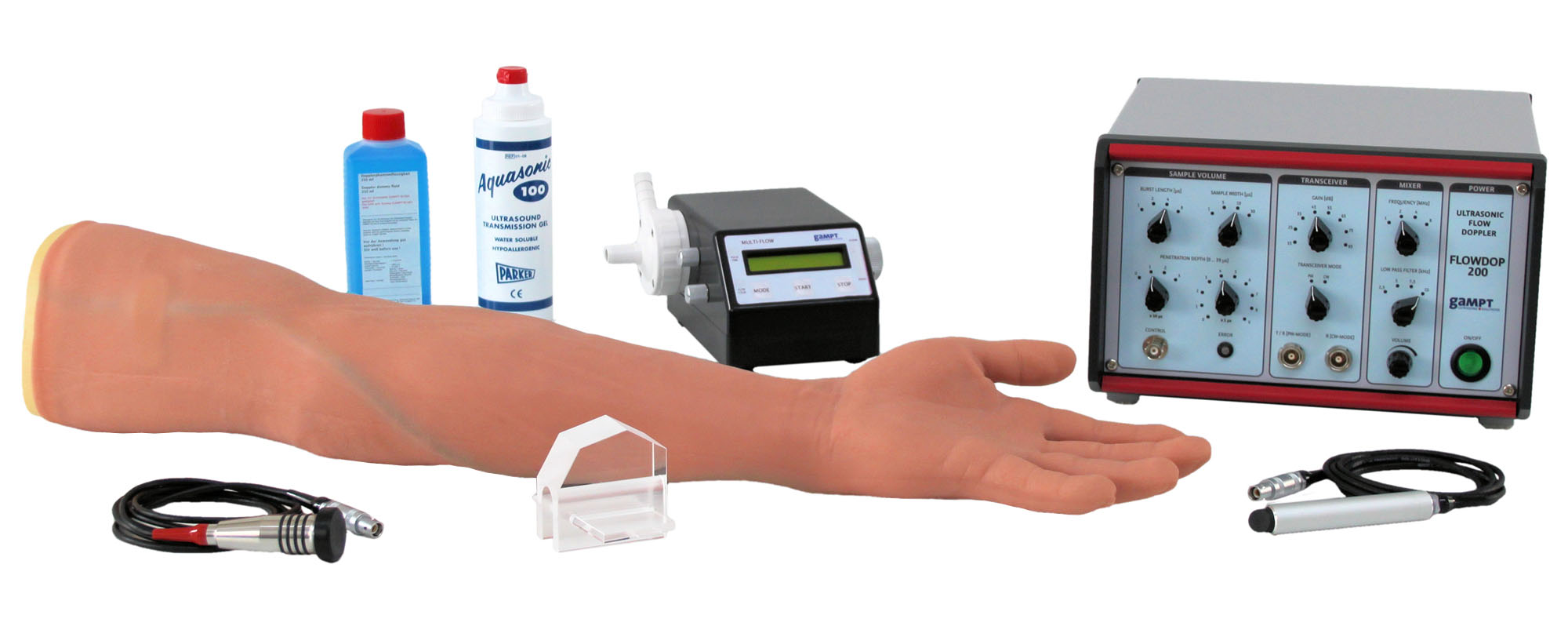Article No. VK-19007
Doppler Sonography (Ultrasound Experimental Set 7)
Investigating the fundamental physical dependences of ultrasonic Doppler effect on frequency, incidence angle and blood flow velocity
Doppler sonography refers to the use of the ultrasonic Doppler effect in human and veterinary medicine. It is primarily used to determine blood flow velocities, characterise flow curves and localise and classify stenoses and valvular heart defects.This set helps to demonstrate the fundamental physical dependences of ultrasonic Doppler effect on frequency, incidence angle and blood flow velocity. With the ultrasonic pulse Doppler and the accompanying software, the signal recording and signal processing can be shown, up to the colour-coded Doppler frequency spectrum used for medical diagnostic purposes.With the realistic arm phantom and the microcontroller-driven centrifugal pump, different blood flows (venous = continuous, arterial = pulsatile) can be set and measured. The stenosis incorporated into the arm phantom is to be detected and characterised by means of the Doppler. Using the pulse curves as a basis, statements can be made regarding the flow velocity and air chamber function.If the set is supplemented with a blood pressure cuff, Doppler measurements of the occlusion pressure for the characterising of peripheral arterial occlusive diseases can be demonstrated.
| Ord.no. | Description |
|---|---|
| 50400 | Ultrasonic pulse Doppler FlowDop200 |
| 50152 | Ultrasonic probe 2 MHz |
| 50112 | Doppler prism 3/8″ |
| 50130 | Centrifugal pump MultiFlow |
| 50435 | Ultrasonic Doppler probe |
| 50160 | Arm phantom |
| 70200 | Ultrasonic gel |
| Ord.no. | Description | for Experiment | |
|---|---|---|---|
| 50201 | Flow measuring set | PHY13 | Ultrasonic Doppler effect |
| 50150 50201 |
Standpipes, Flow measuring set |
PHY15 | Fluid mechanics |
| 50300 | Blood pressure cuff | MED06 | Peripheral Doppler blood pressure measurement |
